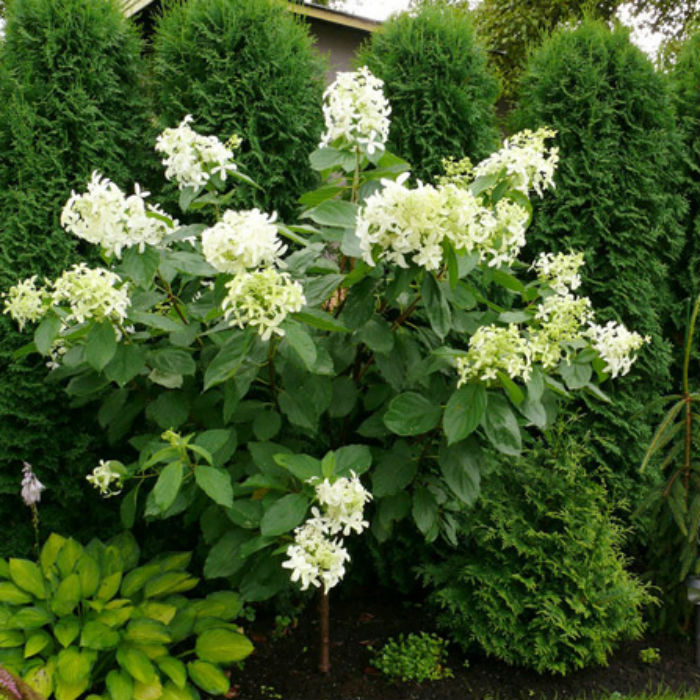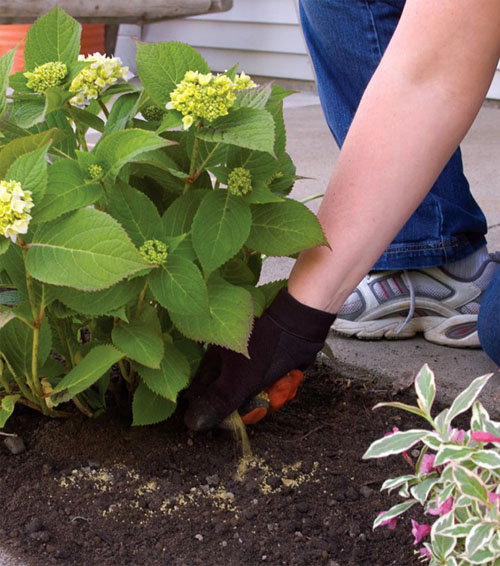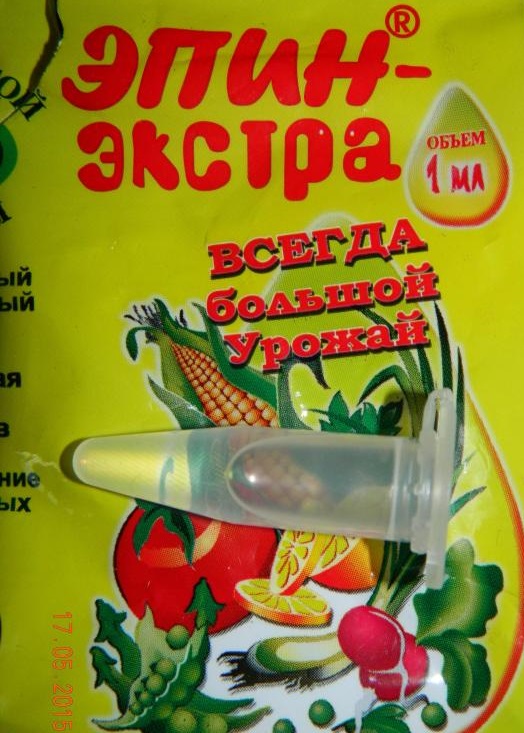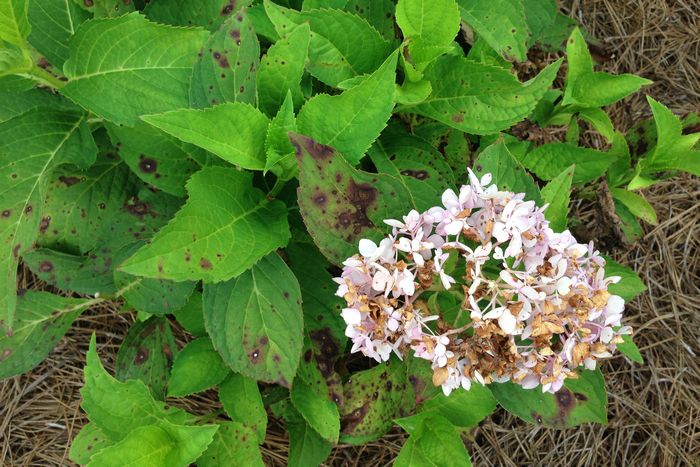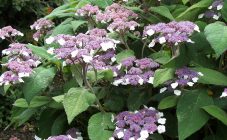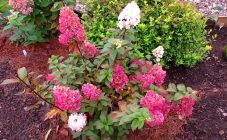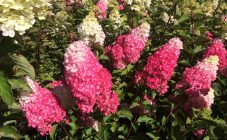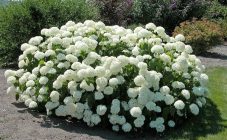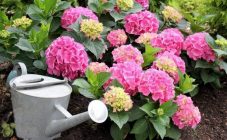Content:
Many gardeners use single or group plantings of a wonderful shrub - hydrangea to decorate their summer garden. Its flowering from June to the very frost delights with its duration, freshness, abundance of colors and shapes.
One of the many and favorite types of hydrangea in the garden is the panicle hydrangea, or Hydrangea paniculata. The Latin name translates as "a vessel of water" and indicates the hydrangea's love for moisture.
general information
Hydrangea paniculata belongs to the Hortensia family. It is a large shrub native to East Asia. Culturally, it rarely reaches more than 2.5-3 meters in height, while in the wild it can be a tree up to 10 meters high.
The roots of the hydrangea grow much more than the crown. They do not lie deep below the soil surface. The leaves are large, oval, bright green. Inflorescences are large panicles, densely covered with two types of flowers. Some flowers are small and fruiting. They are densely located on the inflorescence, fall off early and subsequently develop into a fruit - a box full of small seeds. Others are sterile and large, located on long stalks on top of fruiting flowers. Four petals curl slightly towards the center.
Characteristics of hydrangea paniculata:
- winter hardiness;
- growth rate;
- shade tolerance;
- plant - long-liver;
- flowering duration.
Hydrangea Great Star: description
The Great Star hydrangea is unique in that it has huge (up to 10 cm in diameter) sterile flowers. They are on thin stalked legs like butterflies surround small fruit flowers. Four petals of one flower, slightly twisted and resemble propeller blades.
The old Great Star variety appeared in the famous private garden Vastrival of the French princess Greta Sturdza. Hydrangeas were Greta's favorite flowers.
Hydrangea Gray Star is a fast growing deciduous shrub. The height of the bush can be 2-3 meters, and the compact semicircular crown spreads out 1.5-2 meters in diameter. Shoots are rough, straight, firm, light brown in color. One panicle-shaped inflorescence can be up to 25 cm in size. It begins to bloom in July. Duration of flowering 2-3 months. The leaves are large, dark green, favorably emphasize the snow-white petals - the propellers of the inflorescences.
Hydrangea Star: landing
Choosing the right place for Great Star panicle hydrangea is not easy. This plant loves well-lit places, but at the same time, direct sunlight will oppress it. It would be nice to choose a place where the sun will appear in the morning and evening, and during the rest of the period there will be partial shade from neighboring trees or buildings.
An important condition for good growth and abundant flowering of panicle hydrangea is the soil. It should be fertile, loamy, well-drained and acidic (pH 6.0).
If natural soil is not suitable for planting a plant, it is necessary to independently prepare a soil mixture of equal parts of humus, peat, garden soil and sand. Clay soils must be diluted with sand and peat. When planting, urea (20 g), potassium sulfate (30 g) and superphosphate (150 g) can be added to the soil mixture. Also, hydrangeas will love soil with a mixture of spruce or pine needles.
The distance when planting hydrangeas is selected taking into account the task set for decorating the landscape. When planting in groups or to create a hedge, it must be borne in mind that the plant grows and develops rapidly, and its root system grows in width.
The planting pit is 50 * 50 cm in size. The planting depth depends on the size of the root system. After planting, the root collar should be level with the ground.
Reproduction of hydrangea paniculata
The easiest way to increase the number of hydrangea bushes is to air-cut them. For this, healthy, strong shoots are carefully bent to the ground and buried in a shallow hole. To fix the branch in the right place, press it from above with a stone or pin it down with a metal wire. Watering and feeding is carried out together with the mother bush. After a year, you can separate the rooted seedling and transfer it to a new place.
Hydrangea can be propagated by cuttings in spring, summer and autumn. For spring cuttings, during the swelling of the buds, the lignified shoots of the last year are cut off.
The stem for planting must have two internodes. The lower part is cut at 45 degrees, and the upper part is left flat. Before planting in a container with a mixture of sand and peat, the cuttings are dipped in root-forming preparations, and then buried by 5 cm. The container with cuttings is watered abundantly and placed in a greenhouse for rooting. Cutting care consists of regular watering. After 1.5 months, the rooted cuttings can be transferred to open ground. For the winter, immature plants must be protected from frost.
The way to propagate paniculate hydrangea with seeds at home takes a lot of time and effort. It should be understood that seedlings obtained in this way of reproduction may not have signs of a parent plant.
In the fall, small hydrangea seeds are sown in a container with a mixture of soil, sand and peat. They are not buried, but only scattered over the surface and compacted. To create the desired temperature (20 degrees), the container with seeds is covered with a film, which is regularly removed to ventilate and moisturize the soil.
The emergence of seedlings can be expected in 1 month. The grown seedlings dive twice, leaving the strongest plants, and then they are planted in separate containers. During this period, they are occasionally fed with nitrogen fertilizers. Two years after sowing, young hydrangeas can be hardened and planted in open ground.
Great Star Hydrangea Care
Like any other hydrangea variety, Great Star loves moisture, so watering should be regular and abundant (2 buckets per 1 adult bush). It is necessary to water every 2-3 days, but if the summer is dry, then the frequency of watering should be increased. Hydrangea responds very poorly to sudden changes in humidity. Long periods of drought, and then too much watering can destroy the plant.
Without feeding, hydrangea grows and develops very poorly, therefore, with the first heat, fertilizer is applied to build up green mass. You can feed it with special formulations for hydrangeas (Agricola Aqua, Flower Paradise, etc.), or you can make your own mixture of 30 gr. superphosphate and 40 gr. ammonium sulfate for each bush.
A good support for the plant will be the treatment of foliage all season with an aqueous solution of Zircon or Epin-Extra.
The second dressing (60 g. Superphosphate and 40 g. Potassium sulfate) is carried out before flowering.You can also use herbal infusion of nettle and dandelions (for 1 bucket of water 0.5 liters of infusion).
In summer and autumn, organic fertilizers (manure, humus, compost) can be applied under the root of the plant or fertilized with potassium humate.
In addition to basic dressings, you can give the plant the preparation Shine1 after rain (1 spoon per 10 liters of water).
At all stages of growing hydrangea, the trunk circle must be mulched. This will allow moisture to stay in the soil longer and there will be no need to constantly loosen the soil. Mulch can be different - sawdust, needles, shavings. Instead of mulch, you can plant ground cover plants (subulate phlox, sedum, etc.) around the bush.
Pruning the hydrangea bush can be done in the spring and fall. In autumn, the faded flower caps are cut off. But in the spring, you can carry out not only sanitary pruning of the bush, but also shape it like a tree.
Bushes older than 2 years are pruned. During this period, it is necessary to decide what shape to give the shrub.
If you leave the natural form, then during sanitary pruning it is necessary to remove all dry, broken and growing branches inside the bush. Young shoots are only slightly shortened by 1-3 pairs of buds.
When forming a plant on a stem, a young shoot with an even trunk is chosen. It is planted separately and for the first three years they form a trunk, first pinching all the lateral shoots, and the next year they are cut into a ring. It is imperative to strengthen the plant with support. A wooden stake is buried in the ground next to a bush and a hydrangea is tied to it in several places. Each year the main trunk is shortened to a strong bud until it gains strength and grows to 1.5 meters. Only after this does the formation of the crown and skeletal branches begin. The stem will be fully formed in 6 - 8 years. Hydrangea paniculata lends itself better to forming than other types.
Diseases and pests
The cause of the defeat of hydrangea paniculata by viral and fungal diseases can be:
- lack of vitamins and nutrients;
- stagnation of moisture in the roots of the plant;
- a sharp change in drought and watering;
- improper pruning, planting and plant care.
Most often, hydrangeas develop chlorosis. This disease causes the leaves of the plant to turn pale and turn yellow. This is due to a lack of iron and nutrients.
For treatment, the bush is sprayed with one of the drugs Agricol, Chelate, Antichlorosis, Ferovit, etc.
With a large lesion, fertilizers containing iron (potassium nitrate, copper sulfate) are applied under the root.
Of the fungal diseases, hydrangea most often affects:
- White rot that attacks the roots of the plant, and then its leaves and branches. At the first signs of white rot (manifested by a brown tint of foliage and branches), the bush is treated with Fitosporin. It is better to dig up and destroy a heavily infected plant.
- Gray rot affects all plant tissues. They become watery. Holes appear on the leaves. The fungus of gray rot is very dangerous during the rainy season. In a humid environment, it multiplies rapidly and spreads throughout the garden. The diseased plant must be treated with Fundazol, and the affected branches must be cut and burned.
- Powdery mildew appears in a humid warm environment. It manifests itself as white oily spots on the leaves of the plant. At the initial stage of the lesion, the plant can be treated with a solution of laundry soap and copper sulfate. If this remedy does not help, then the bush is treated with Skor, Topaz, Cumulus, etc.
Snails, slugs, aphids, spider mites, gall nematodes are pests that can cause serious damage to any plant in the garden. The fight against them is carried out all season.
- Snails and slugs eat the buds and young leaves of the plant. They are harvested in early spring and late autumn, when they accumulate in large quantities in the roots of plants. To destroy them, special granules are scattered between the plants.
- Aphids stick to the underside of the leaves and suck the juices out of the plant. To fight it, Akarin, Tanrek, Commander are suitable.
- A spider mite enmeshes the leaves with a small cobweb, and over time a marble pattern appears on them. In the future, they wither and die. Insecticides will help with ticks.
- Gall nematode is dangerous because it damages plant roots and cannot be detected immediately. When a suddenly healthy plant begins to wither and wither, it means that it is seriously affected by a nematode. It is impossible to save a dying plant. To prevent nematodes, before planting, the soil and roots of the plant must be treated with copper sulfate.
Hydrangea paniculata Great Star in a garden landscape
This versatile plant lends itself well to modeling, looks great both in group and in single plantings.
Paniculata hydrangea is often planted along water bodies to give the area even greater relief.
Among other plants in a group planting, hydrangea will stand out as a bright highlight.
A single bush on a green lawn will look great.
To divide the territory into zones, hydrangea is planted in strips consisting of one or more plant varieties.
In whatever corner of the garden the Great Star panicle hydrangea grows, it will never be left without attention and enthusiastic worship.
